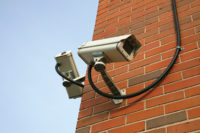As the surveillance industry adopts network cameras, it leaves behind the legacy NTSC/PAL-based video constraints. These constraints are mostly characterized as resolution limits. This is a great thing for the security industry as a whole, because the increased level of image detail improves the speed and accuracy of investigations. This trend towards increased resolution will continue and is accelerating to higher megapixel resolutions. In addition, it will increase the technical capability across the industry as we are forced to leave behind the plug-and-play analog systems for more complex best of breed deployments.
The Higher the Megapixel Count, The Higher the Costs
This shift also causes us to leave behind the well-understood cost structure of NTSC/PAL based systems. One possible guide for budgeting in this new environment is to multiply the current baseline cost of an NTSC/PAL system by the number of megapixel cameras being recorded. For example, if a 32-camera analog NTSC/PAL system would cost $16,000, the same 32-camera network based system using all 1 to 1.3 megapixel cameras would cost approximately $18,000. A 32-camera 2.1 megapixel system would be 2x or $32,000, and by the same rule of thumb, a 32-camera 3 megapixel system would cost 3x or $64,000. This rule of thumb works best for initial budgeting and estimating. Obviously, this should only be used as a rule of thumb; adjustments will be made based upon the components and the complexity of the operating environment. So, as the industry adopts megapixel, it also adopts higher costs.
The Megapixel Camera Effect
The source of this overall system costs increase is the camera costs themselves, which typically make up at least 50 percent of the cost of a megapixel surveillance system. For example, as you increase the camera’s resolution you also need to increase the quality of all the camera’s other imaging system components. The imager, optics, iris and system-on-a-chip all must undergo performance and quality gains to support the demands of megapixel video. As the number of pixels increases, light sensitivity and depth of field decrease. Therefore, without improvements in the imager, optics and iris technologies the resulting images can have multiple darker portions that are not in focus. In addition, the system-on-a-chip, or the camera’s CPU, has to improve significantly. The workload and overall systems management on megapixel cameras must increase in order to process the megapixel image complexities and the corresponding amount of data. Increases in processing power, memory and systems speed have to be achieved; otherwise the frames per second must be significantly lowered as a tradeoff. This is often why many high megapixel cameras only support between 1 and 15 fps. A large investment in research and design has been dedicated to making these required CPU improvements throughout the industry.
“Bit” By the “Bytes”
Another source for increased system costs are the switch, server, storage and display technologies required to support megapixel resolutions. These systems have been increasing in performance for years; however, their costs are also increasing. Manufacturers continue to make faster networks, processors, hard drives and larger displays but the usage of these components outpaces the growth in capacity or size. This is where being able to accurately calculate the network, processor bit and storage byte loads matters. It is also where the practices of the legacy security industry don’t translate as easily as the cost conversions. The effect of megapixel resolutions is that system designers over estimate the hardware required to support the increasing number of megapixels, and typically add a little “bit” more overhead just to be safe.
NTSC/PAL Migration Myth
To delay these increased costs, many within the industry are choosing to migrate to video encoders instead of using megapixel network cameras. When encoders are selected as a solution the existing analog cameras are most likely already 5 to 10 years old. This is a stopgap measure at best, since the costs of using encoders compared to replacing all the analog components with a network based megapixel camera system are significantly lower. However, those customers will eventually pay more over the next seven to 10 years because as the analog cameras fail, megapixel cameras will replace them. The results are that the security end user pays twice: once for the encoder installation and again for the eventual megapixel networked cameras.
Don’t Get Bit
The best way to plan for the increases in cost is to start the transition to megapixel networked cameras in phases. Each phase can be estimated by the megapixel multiplier rule of thumb, and generally each has a life cycle of two to three years in concert with the camera technologies. I would recommend a new phase starting each time the next increase of megapixel camera resolution could support 30 frames per second. If the cameras can’t support full frame rate, I would say it’s too early to adopt that type of camera, because you are generally getting the older technology at a premium price. This phased approach to staying abreast of megapixel technology can help keep your surveillance budget from getting bit.



